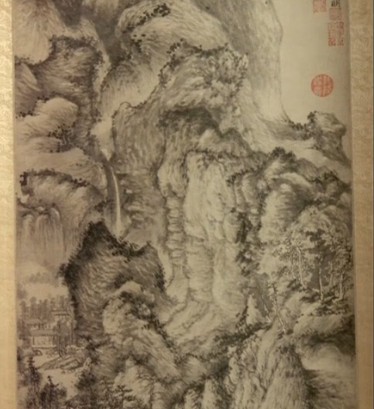In the more intimate, private pleasures of the hand scroll,
在供個人賞玩 更為私人的手卷之中
the painted landscape evolved into something new.
山水畫也有了新的發(fā)展
Hand scrolls were river-shaped journeys,
觀賞手卷如同順水泛舟
stories revealed as you unrolled the scroll
卷軸舒展之間 那種種志異奇譚
and travelled almost cinematically through space and time.
便穿過時空的帷幕 在你面前一一展現(xiàn)
This hand scroll was painted by the artist Qiao Zhongchang.
這幅手卷是喬仲常所繪

It was based on one of the most famous Chinese poems,
題材取自一篇中國古代的著名賦文
written by a government official,
它的作者既是朝廷官員
a man of culture and refinement, called Su Shi.
也是一位大文豪 名為蘇軾
Su Shi had been exiled after a political purge
蘇軾在一場政治清洗后被流放
and spent his days writing about excursions
流放期間 他記錄下了
he took with his friends up the Yangtze River.
自己攜友同游長江的旅程
Here he is carrying fish and wine
這一段 他帶上魚和酒
as his wife sees him off on the journey.
他的妻子也來與他送別
We turned the boat loose to drift with the current.
反而登舟 放乎中流
All around was deserted and still.
時夜將半 四顧寂寥
A lone crane flew overhead.
適有孤鶴 橫江東來
The painting evokes both the pleasures of friendship
畫作同時描繪了與友同游的喜悅
and the melancholy of the exile.
和罹遭流放的愁思
A dream, but one with a bitter sweet taste.
這是一場苦樂參半的夢
But landscape painting wasn't always about escape.
但山水畫也不總是畫山水
Sometimes, artists captured the violence of history.
有時藝術家也會描繪滄海橫流的景象











